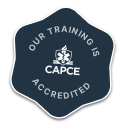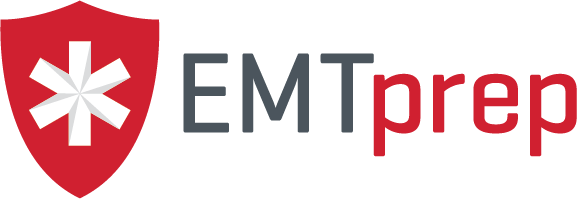
As of July 1, the new NREMT certification exam is live! This new examination only applies to Paramedic and Advanced EMT candidates. You might be wondering, what does this mean for you, a candidate trying to earn certification as an AEMT or paramedic? Here are some answers to a few common questions:
Who has to take this new exam?
The new exam will be required for any AEMT or Paramedic candidates who have not passed both the NREMT psychomotor (hands-on) and cognitive (written) prior to July 1, 2024. Whether you’ve already passed the psychomotor or the previous cognitive exam prior to July 1 doesn’t matter. If you haven’t passed both tests, you’ll need to take the new certification exam. This new exam will also be used in the future for current AEMTs and Paramedics wishing to recertify by examination rather than recertifying with continuing education hours.
What about EMTs and EMRs?
The NREMT hasn’t announced any plans to change the process for EMT or EMR candidates. EMT psychomotor exams are run by each state, not the NREMT, so check with your state EMS office for the requirements. You’ll still need to take the NREMT’s cognitive exam to earn NREMT certification.
Will the new exam be harder?
Not necessarily, but the new exam does include some new question types, which could make the exam feel harder or more complicated. The new exam has also integrated “clinical judgement scenarios,” designed to assess critical thinking and decision making much like many of the stations of the old psychomotor exam.
What kinds of questions should I expect?
While previously, exams included mostly multiple-choice questions, one correct answer, and some multiple-response (“choose all that apply”) format questions, the new exam includes a few more question types called “Technology Enhanced Items."
Graphical Questions: these questions will present an image, such as an ECG strip, as part of the question. The old exam also included graphical questions as either multiple-choice or multiple-response questions.
Drag-and-Drop: candidates will be asked to drag one of several possible answers into each blank in the answer area. Drag-and-drop questions are similar to multiple-choice questions in that the candidate must select from a list of options, but the candidate must answer two or more parts of the question. For example, you might be asked to drag an appropriate working diagnosis into one box and then drag an appropriate treatment into a second box. In that case, you’d need to select both the correct working diagnosis and correlating treatment in order to answer the question correctly.
Build List: candidates will be provided with several items in a list, and asked to arrange them in a specified order. For example, you might be asked to organize several potential differential diagnoses into a list from most likely to least likely, given a patient presentation.
Options Box: candidates will be presented with a list of several items, and asked to sort the items into a T-chart. For example, you could be given a list of potential changes to the patient’s vital signs (heart rate increases, respiratory rate decreases, level of consciousness increases, etc) and asked to sort them into either indicating an improvement or deterioration in the patient’s condition.
Clinical Judgement Scenarios: some questions will be asked in series, so each question builds off the last. Any of the above formats could be used in a series of clinical judgment scenario questions.
How can I prepare for all these different types of questions? Are there any test-taking strategies?
The good news is that the same basic test-taking strategies still apply, even to these new question types. Regardless of the question type, no partial credit is offered for questions on the NREMT exams, so remember to read each question carefully and pay close attention to the answers you selected before advancing to the next question. There is no way to return to a previously answered question or change your answer once you’ve moved on. Another great strategy is to practice these types of questions in advance! EMTprep has been preparing for this change and already includes practice with answering these types of questions in our test prep content.
What is a “Clinical Judgement Scenario?”
Previously, the psychomotor exam included stations such as dynamic and static cardiology and even a station that evaluated your ability to run a mock 911 call from start to finish. Clinical judgment scenarios are designed to assess the same sorts of skills, knowledge, and decision-making as the former in-person scenarios did by asking you a series of questions based on a single scenario. In a clinical judgment scenario question series, you’ll start with some basic dispatch and background information (for example you are called for an 80-year-old male with respiratory distress, your response time will be 5 minutes, and the address is 10 minutes from your local hospital). You’ll be asked an equation based on that limited dispatch information, and you’ll need to draw from the clues within the information to answer the question (for example, you might be asked to consider whether you need more resources or assign roles to your crew). After you’ve answered all the questions about pre-arrival considerations, you’ll receive more information, such as several findings, when you arrive on the scene. Again, you’ll answer questions based on the information you have so far. You might be asked to prioritize initial interventions (airway management, providing oxygen, etc) or to select appropriate monitoring to perform (SpO2, cardiac monitor, lung sounds, etc). Regardless of how you answer each question, you will eventually receive even more information about the scenario. This pattern will continue until you reach the post-scene questions, which may ask you to respond to changes in the patient’s condition during transport, prioritize secondary and tertiary treatments, or to otherwise reflect upon the scenario in some way. Each question is scored individually, and the scenario will progress whether you answered the last question correctly or not, so make sure to pay close attention each time you receive new information. Each scenario has three parts: en route, scene, and post-scene—but there can be several questions to answer in each part.
Clinical judgment questions will make up about one-third of the test questions you see during your test (31-35% for AEMT candidates and 34-38% for Paramedic candidates).
Why did the National Registry move to this model for testing?
This model of testing more closely aligns advanced prehospital providers with models of testing for nurses and other healthcare professionals. By moving to this model, AEMTs and Paramedics gain some legitimacy and will also have a simpler testing process—rather than scheduling and paying for two separate tests or potentially traveling out of state to find a psychomotor test. Candidates will simply need to schedule and pass one test at a Pearson Vue center to earn certification.
What happened to the psychomotor (hands-on) test?
The psychomotor test for AEMTs and Paramedics was discontinued after June 30, 2024. This means that no more psychomotor tests will be offered anywhere, period. If you haven’t passed both the psychomotor and the cognitive (written) test yet, you’ll now be required to pass the new written NREMT certification exam. If you have already passed your written test but not the psychomotor test, you’ll now need to pass the new written exam.
- Dozens of courses and topics
- State-specific requirements
- We report to CAPCE in real time


